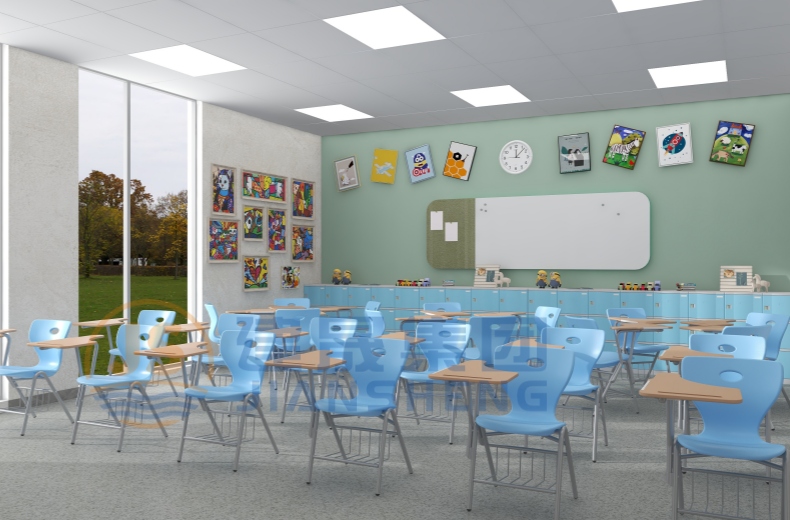- Home
- About Us
- Service
-
Solution
- Kindergarten Classroom
- Primary School Classroom
- Secondary School Classroom
- High School Classroom
- College Classroom
- Training Classroom
- Music Classroom
- Art Classroom
- Lecture Classroom
- Computer Classroom
- Library
- Principal Office
- Administration Office
- Meeting Room
- Reception Room
- Public Area
- Teachers' Office
-
Products
- Case Study
- News
- VR Designs
- Video Center
- JS Lab
- Contact Us

A Guide to Choosing School Furniture that Meets the Needs of Your School
2024-03-26 22:00
A Guide to Choosing School Furniture that Meets the Needs of Your School
Selecting appropriate furniture for schools is a critical decision that impacts students' comfort, engagement, and overall learning experience. The right furniture not only enhances the aesthetics of classrooms and common areas but also supports various teaching and learning activities. In this article, we offer guidance on how to choose school furniture that aligns with the specific needs and requirements of educational institutions.

1. Assess Functional Requirements:
Before purchasing school furniture, it's essential to assess the functional requirements of different spaces within the school. Consider the specific activities that will take place in each area, such as classrooms, libraries, laboratories, and common areas. For example, classroom furniture should support interactive teaching methods, accommodate different learning styles, and promote collaboration among students.
2. Prioritize Comfort and Ergonomics:
Comfortable and ergonomically designed furniture is essential for ensuring students' physical well-being and concentration during long periods of study. Look for chairs and desks with adjustable features, such as seat height and backrest angle, to accommodate students of different sizes and preferences. Ergonomically designed furniture can help prevent discomfort, fatigue, and musculoskeletal problems among students and teachers.

3. Consider Durability and Safety:
School furniture should be durable enough to withstand daily use and potential wear and tear. Choose furniture made from high-quality materials that are easy to clean and maintain, such as solid wood, metal, or durable plastics. Additionally, prioritize safety features such as rounded edges, sturdy construction, and non-toxic finishes to minimize the risk of accidents and injuries, especially in environments with young children.
4. Optimize Space Utilization:
Efficient space utilization is crucial, especially in classrooms and other learning environments where available space may be limited. Choose furniture that is space-saving and flexible, such as stackable chairs, foldable tables, and modular storage solutions. This allows for easy reconfiguration of classroom layouts to accommodate different teaching methods, group sizes, and activities.
5. Promote Sustainability and Environmental Responsibility:
Incorporating sustainable practices into furniture procurement decisions not only benefits the environment but also promotes social responsibility within the school community. Look for furniture manufacturers that prioritize environmentally friendly materials, production processes, and certifications such as FSC (Forest Stewardship Council) or GREENGUARD. Additionally, consider options for refurbishing or repurposing existing furniture to minimize waste and extend the lifespan of resources.

6. Involve Stakeholders in the Decision-making Process:
Finally, involve relevant stakeholders such as teachers, students, administrators, and facilities staff in the decision-making process when selecting school furniture. Gather input on their preferences, needs, and concerns regarding furniture design, functionality, and usability. By fostering collaboration and communication, you can ensure that the chosen furniture meets the diverse needs and preferences of the school community.
Choosing school furniture that suits the needs of the school requires careful consideration of various factors, including functionality, comfort, durability, space utilization, sustainability, and stakeholder input. By prioritizing these aspects and making informed decisions, educational institutions can create learning environments that support student engagement, well-being, and academic success.
Get the latest price? We'll respond as soon as possible(within 12 hours)







